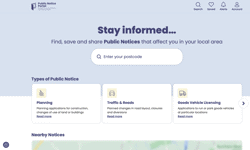Nic started with a show of hands – always entertaining. Who had ezines? The response – about 50%. Next – of those, how many were making money? The response – less than half. So, fertile ground.
Nic, who helped launch the UK version of the Daily Reckoning ezine in 2002, is passionate about ezines which he considers are a license to print money. US publishers are raking it in and Fleet Street Publications has started to make serious money too – but they are still only scratching the surface.
In this context, ezines are free and so the money they make is essentially through advertising – either for in-house products or from third party suppliers.
Strategic imperatives
Publishing models are changing; revenues derived from ezines can offset the effect of shrinking list universes and the declining response from direct mail. Ezines are cost effective ways of building commercial relationships. Unlike traditional publishing, free ezines make it easier for you to maintain a dialogue with lapses, cancelleds and prospects as well as deepening the relationship with your actives. The regular broadcasting of quality information (must be quality, but don’t compromise your paid-for offering) into the market enhances your brand’s credibility within it. Ezines are also great vehicles for testing new ideas, offers, and headlines as well as getting quick feedback. Lastly – ezines can make loads of money – yippee!
How to build your ezine list
Disappointingly, there is no magic formula. (Is there ever?) Nic recommends a scatter gun approach of collecting email addresses at each and every opportunity: existing customers, lapses etc; drive traffic to your web site and then ensure numerous opportunities per page to capture email addresses; place the free ezine offer (as a benefit) on all printed correspondence (magazines, newsletters, renewal notices); prime customer services to offer it to all callers; organise co-registration deals with third parties. The list is endless. Two general points – firstly go for quality over quantity. You will get better response and minimise the potential for ISP blocking. Secondly avoid double opt-ins …. until you have to.
Creating strong content
Perhaps the reason why many ezines are not yet making money is because the content is boring! But it doesn’t have to be. It is not just about delivering data and facts but also about building relationships. However be careful; on the one hand you need to make the content compelling, but on the other hand you must avoid pulling the rug from under the feet of your paid-for product by giving away premium content for free. One way around this is to develop a voice; to provide a commentary on the news. Associate the ezine with strong authoritative opinions. Adopt a personal tone and elaborate on your own personal experiences. A word of caution about getting personal; done well, it will work like a dream – done badly and it will be boring and slightly embarrassing. It all boils down to the quality of your journalists.
What about format, length and frequency? Nic prefers plain text over html, because ‘that is how people write’; length will depend on your resources and daily frequency is best, weekly is minimum and monthly and beyond is a waste of space.
Making money
There are three ways to make money through your free ezines: firstly clickthrough advertisements (either to your own products or third party ones), secondly dedicated endorsements (solus) and thirdly editorial mentions.
Clickthrough advertisements
Typically these are 70-150 words. It is recommended to make the links news lead rather than offer lead, because this results in a higher clickthrough rate. Best to place them at the top and middle of the ezine. Incidentally, ads placed at the top out-pull one in the middle by at least 2:1.
Dedicated endorsements (solus)
Typically these are 500-1,500 words, from the editor, giving explicit endorsement. Being a solus offer, this edition of the ezine will not contain anything else. These should contain three links to the promotion; at the top, before the fold and at sign off. In terms of editorial tone, try to be topical (for added urgency) and don’t sell twice. Your aim is to generate interest – to get the recipient to click on the link. In terms of what you can endorse, you can promote products that are outside your core competency (membership of a wine club to a financial services audience) – as long as you make the effort to explain why.
How often and how many
As a rule of thumb, publishers make two thirds of their income from endorsements and one third from ads. Obviously your publishing frequency will dictate policy, but typically a daily, 1,000 word ezine can handle two advertisements per ezine plus two dedicated endorsements a week.
Editorial mentions
This is simply a question of tailoring your content to the product you wish to promote. If you’ve got a gold report to promote, then an ezine about trends in gold prices, along with a link to the report should do the trick.
Countdown offer
One tactic that has proved particularly successful (Nic claims to have make £166,000 in ten days from eight emails) is the countdown offer. He bundled all his products together at one price and set a deadline after which the price would rise significantly. An initial paper insert was followed by eight solus emails over ten days, each counting down to the deadline. The approach was so successful that they now use this approach for al new launches and renewals.
Final tip: if you want to see a successful ezine at work, then go to www.dailyreckoning.co.uk and sign up. After all, it’s free.
FEATURE
UK NEPA 2005
UK NEPA held its 11th annual conference on 12 July at the Millennium Gloucester Hotel. It was a lively day, including round table discussions, panel discussions and presentations. James Evelegh went along to listen and here, reviews the presentation of Fleet Street Publications’ Nic Laight.










